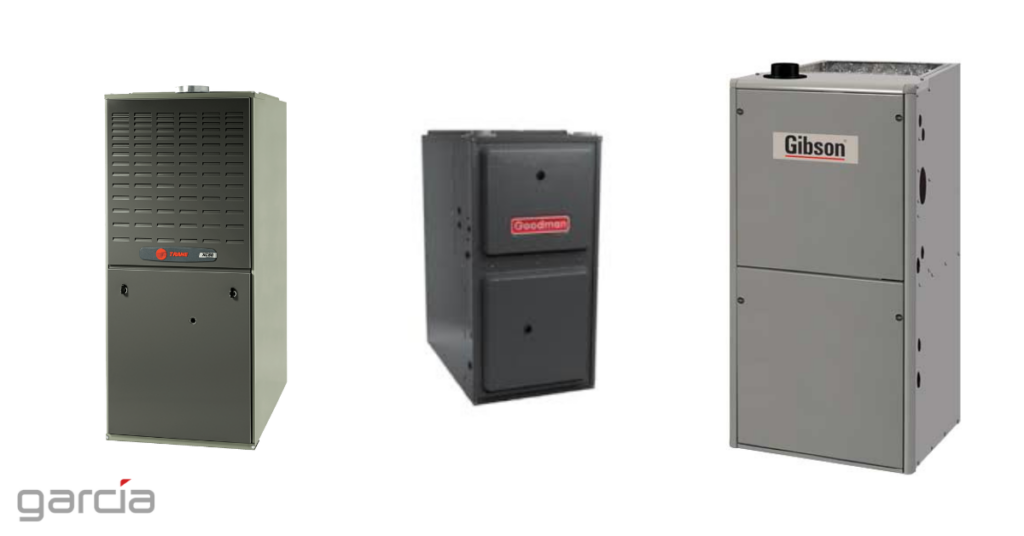Furnaces have been essential devices for heating homes, melting metals, and transforming materials for centuries. Whether you’re looking to heat your home during chilly United States winters or you’re curious about the broader applications of furnaces, this comprehensive guide will explain everything you need to know about Furnace Systems.
What is a Furnace?
A furnace is a device designed to heat air or other materials for various purposes. It’s a critical component of many systems, from home heating to industrial metalworking processes. Furnaces operate by burning fuel or using electricity to generate heat, which is then distributed through a system whether it’s warming your home or melting metal.
Primary Uses of Furnaces
Furnaces serve several crucial purposes, including:
- Heating Homes: Home furnaces burn fuel, generating hot air that is distributed through ducts to maintain warmth throughout the house.
Classification of Furnaces
Furnaces can be classified in several ways, depending on their fuel type, heat generation method, efficiency, and other factors:
- By Fuel Type: Furnaces can be powered by gas, oil, coal, or electricity.
- By Heat Generation Method: They can be either combustion types, which rely on burning fuel, or electric types.
- By Efficiency and Design: Furnaces are categorized as natural draft, forced-air, forced draft, or condensing.
- By Mode of Charging: Furnaces can operate in either intermittent (batch type) or continuous modes.
- By Waste Heat Recovery: Furnaces can also be recuperative or regenerative based on how they recover heat.
How a Heating Furnace Works in Homes
In homes, the furnace is a central heating system that distributes warm air through ducts. The process typically follows these steps:
- Drawing in Cool Air: A blower pulls cool air from the home into the furnace through air ducts.
- Heating the Air: The furnace either burns fuel to heat the air or uses a heat exchanger or heating elements.
- Distributing Warm Air: The heated air is then circulated back into rooms through ducts and delivered via air registers or grills.
Most modern furnaces are fueled by natural gas, oil, or electricity, making them highly efficient and adaptable to different home setups.
What is the Furnace Used For?
Furnaces are primarily used to heat air and distribute it throughout the house. Unlike boilers, which heat water to distribute steam or hot water, furnaces focus on air heating. Boilers and furnaces work differently but are both essential in heating systems.
Is a Furnace the Same as HVAC?
A furnace is part of an HVAC (Heating, Ventilation, and Air Conditioning) system, and its primary role is to generate heat. HVAC systems also include cooling units, ducts, and vents that distribute conditioned air throughout the home.
Why is it Called a Furnace?
The term “furnace” comes from the Greek word “fornax,” which means oven. Historically, furnaces were stone or clay structures that burned coal or wood to generate intense heat. These early furnaces were used for ceramic work, such as kilns, and to smelt ore for metalwork.
How Do Furnaces Work?
Furnaces heat your home by pulling cool indoor air into the furnace, heating it, and redistributing the warmed air through the ductwork. Modern furnaces can heat your home efficiently, especially during the cold United States winters.
AC vs. Furnace: What’s the Difference?
In an HVAC system, the air conditioner is the outside unit, while the furnace is the inside unit. The air conditioner removes heat from the air, which is expelled outside, while the furnace heats air inside and distributes it through the home.
What is the Principle of Furnace?
The basic principle of a furnace involves converting electrical energy into thermal energy through various methods like resistance heating, induction heating, or radiant heating. This principle applies whether it’s a home heating system or an industrial furnace.
Why Do We Need a Furnace?
In United States, where winters can be cold, having a furnace ensures that your home stays warm. Furnaces work efficiently in colder climates, providing reliable heat regardless of outdoor temperatures.
What are the Different Types of Furnaces?
There are four primary types of furnaces:
- Natural Gas Furnaces: The most common type, these furnaces are efficient and affordable to operate.
- Oil Furnaces: Popular in areas without access to natural gas, though they tend to be less efficient.
- Electric Furnaces: While these have a higher operating cost, they are often more durable.
- Propane Furnaces: Less common today, many homes are converting from propane to natural gas.
Is a Furnace Only for Heat?
Furnaces are designed only for heating. For cooling, you’ll need a separate air conditioning unit, though both systems use the same ducts to distribute air throughout the home. Some homes in United States may use a dual fuel system, combining a furnace and heat pump for both heating and cooling.
Furnace Costs vs. Air Conditioning Costs
The answer to Is furnace cheaper than AC? A new furnace costs between $2,800 and $6,900, while installing a new air conditioning unit costs between $3,900 and $8,000. If you’re considering installing both systems, a complete HVAC system will cost between $5,000 and $12,500.
What Are The Advantages of a Furnace?
Modern furnaces offer several advantages, including:
- Energy Efficiency: Newer models use less energy, which can lead to significant savings on your energy bills.
- Durability: Well-maintained furnaces can last for 15 to 20 years, providing long-term savings.
Furnace vs. Heater: What’s the Difference?
A furnace can be considered a type of heater, but not all heaters are furnaces. Furnaces are part of your home’s heating system, whereas a heater can refer to any device used to generate heat.
Do Furnaces Use Water?
Furnaces do not need water to run. However, some furnaces produce water as a byproduct of combustion, which condenses as part of the heating process.
What Are The Applications Of Furnace?
- Heating Homes: Furnaces efficiently heat air and distribute it through ducts to keep your home warm during cold months.
- Improving Indoor Air Quality: By circulating filtered, warm air, furnaces can help maintain better indoor air quality.
- Pairing with Air Conditioning: Many modern furnaces are integrated with HVAC systems, which means they also help distribute cool air in the summer.
- Energy Efficiency: Furnaces, especially newer models, are designed to be energy-efficient, helping homeowners reduce utility costs while maintaining comfort.
Gas vs. Electric Furnaces
Does Furnace need electricity? While most modern furnaces use natural gas or electricity, propane-powered furnaces are becoming less common. When choosing a furnace, many USA homeowners opt for natural gas due to its lower operating costs. Hope you get the answer for, Is a furnace gas or electric?
Furnace Energy Types
Furnaces can be powered by gas, electric, propane, or even solar energy. While solar-powered furnaces are less common, they represent a growing trend in energy-efficient home heating.
What is HVAC vs furnace?
An HVAC system includes both heating and cooling components, while a furnace focuses solely on heating. If you live in United States, where summers are hot and winters are cold, you’ll likely need both a furnace and air conditioning system.
Can a Furnace Leak?
Furnaces can sometimes leak water, particularly if there’s condensation from combustion. A leaking furnace can cause rust, inefficiency, and eventual breakdowns.
What Size Furnace Do I Need?
The size of the furnace you need depends on the size of your home. For United States homeowners, it’s generally recommended that your furnace provides between 30 to 60 BTUs per square foot.
How long does a furnace last?
Most furnaces last between 15 to 20 years, though electric models tend to last longer—up to 30 years. Regular maintenance and timely repairs can extend the life of your furnace.
Conclusion: Invest in a Furnace for Your Home in United States
A furnace is essential for maintaining warmth and comfort in your United States home during the cold months. Whether you’re considering a new furnace installation or replacing an old one, understanding the different types, functions, and costs of furnaces can help you make an informed decision. With improved energy efficiency and long-term savings, investing in a furnace is a smart choice for homeowners.
At Garcia Supply, we specialize in both furnace sales and being your trusted furnace supplier. Whether you need a new heating system for your home or business, we provide high-quality furnaces at competitive prices. As a direct supplier, we ensure you receive the best products and service to keep your space comfortable all year round.
Get in touch with us today at (409)-757-8330 or visit the website to explore our furnace options and find the perfect solution for your needs!


